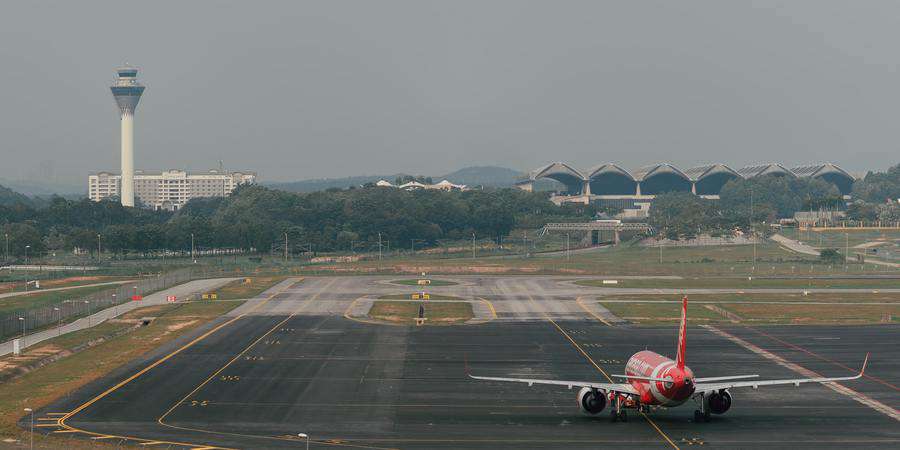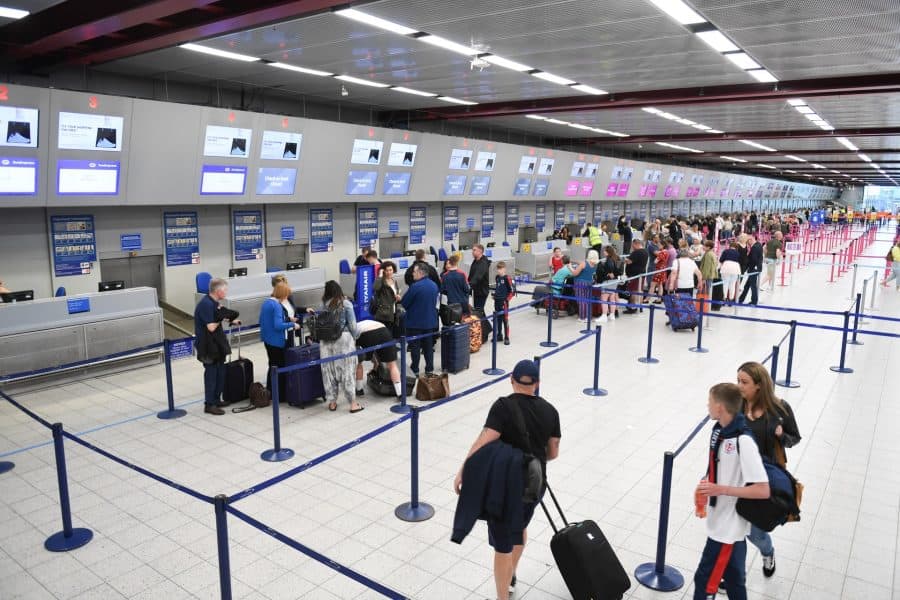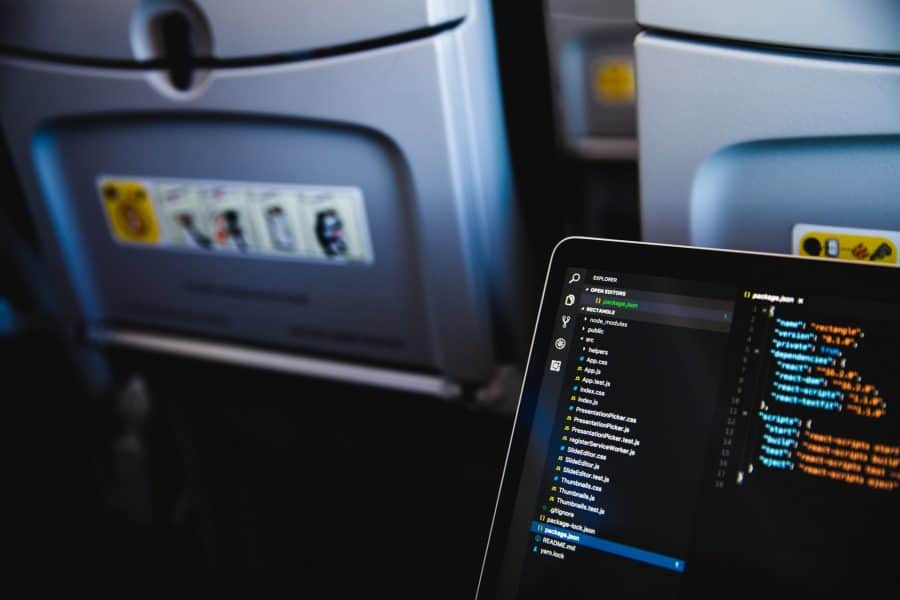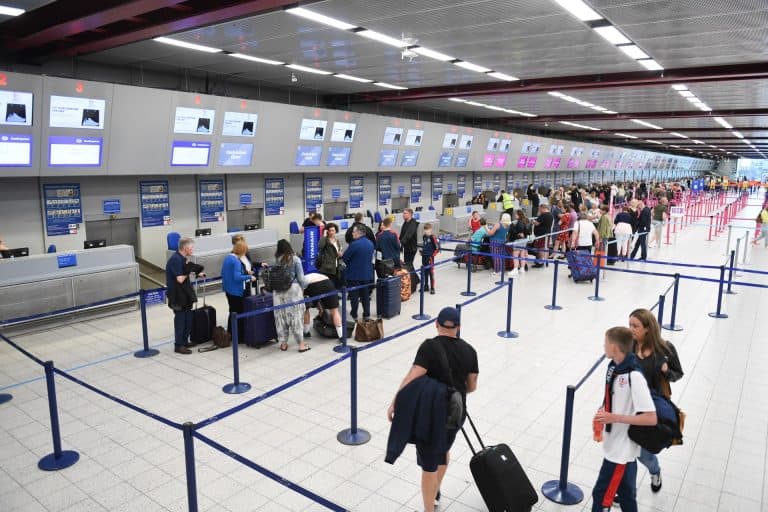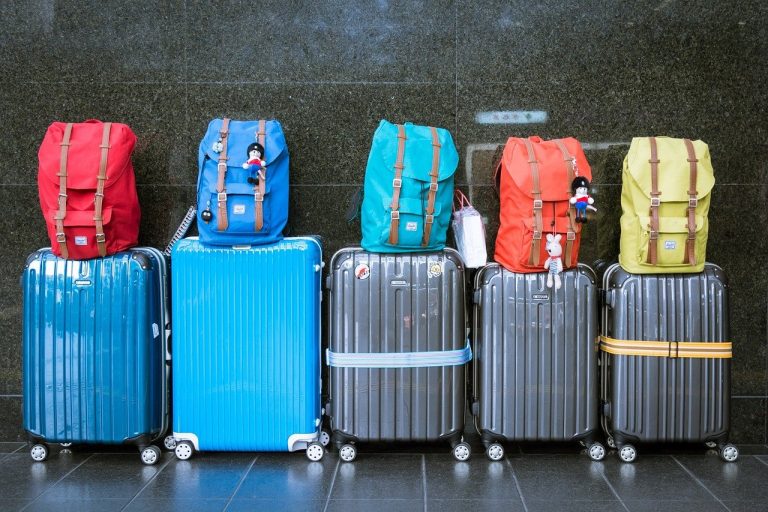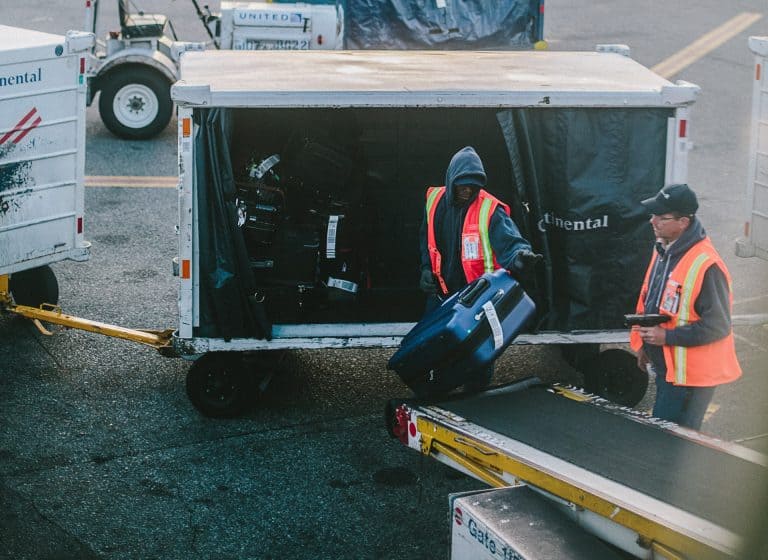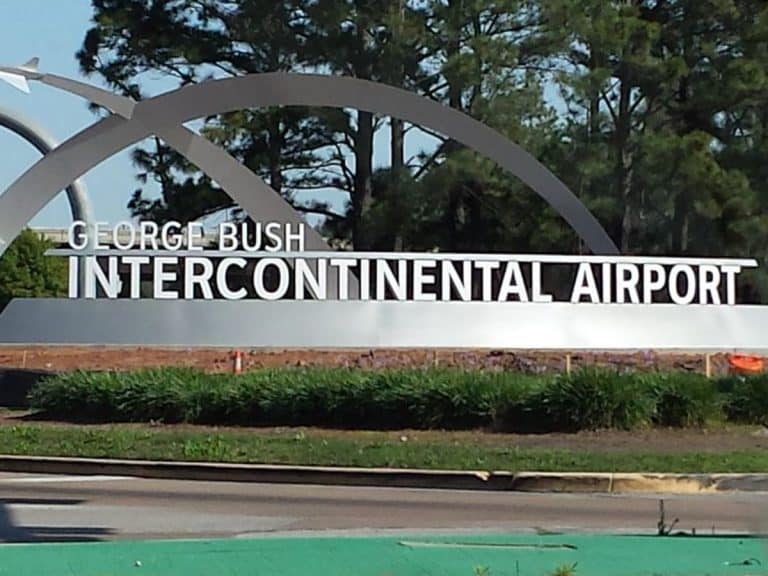What Is the Difference Between a Taxiway and Runway?
For an airport to operate it requires a runway and suitable supporting taxiways. However, if the two are not easily identifiable from each other then it could lead to a disaster. A pilot could accidentally stray onto a runway thinking it?s a taxiway and go straight into the path of an arriving/departing aircraft. To avoid this event occurring, how are runways and taxiways identifiable from each other?
Before we go into the details, in the simplest of terms the difference between a taxiway and runway is a taxiway is a path along the ground which allows aircraft to travel from one place to another, whereas a runway is a space dedicated for aircraft to land onto or take-off from.
Visual Differences
A runway is a large rectangular piece of asphalt/concrete, which is far longer than it is wide.
It has a white outline with dashed lines down the centre. There are many other distinct markings which we will get to in a moment.
Runway lengths and widths can vary greatly. The runway needs to be long enough for departing aircraft to gain enough speed to take-off. Arrival aircraft require a long enough runway to slow down enough after touching down to safely turn off onto the taxiways.
The heavier the aircraft the longer and wider the runway needs to be for them to land and depart.
If a runway only needs to land light aircraft, then they can be as short as 300m long and 8m wide.
When a runway needs to accommodate an A380 (largest commercial aircraft type) then it must be at least 2,900m long and 45m wide. However, some runways are over 5,000 metres long!
Taxiways are also made of asphalt and/or concrete but are typically slightly less uniform, coming in different shapes and sizes. They are a connected network across the airfield linking all aircraft parking spaces to different entries and exits of the runway.
The width of taxiways varies depending on the size of the aircraft it needs to support.
Taxiway markings
The main marking on taxiways are the taxiway centrelines. These cover all of the taxiway network in yellow and show where aircraft should keep centre.
Edge markings are also present which indicate where an area is paved but aircraft are not permitted to use.
There are also different locations along taxiways where aircraft may be required to wait (or hold) until given clearance by the Air Traffic Controller (ATC). There are two types of holding positions; Runway Taxi-Holding Position (RTHP) and Intermediate Taxi-Holding Position (ITHP).

The RTHPs are often indicated by a black rectangle with yellow and white vertical stripes and indicate where a taxiway leads to a runway. There may be multiple RTHPs on a runway entry as the position they are required to hold may vary depending on the weather conditions.
The purpose is to show where an aircraft is required to hold until it is their turn on the runway to ensure the aircraft has not accidently entered it.
It also guarantees that the aircraft is not in the ?ILS (Instrument Landing System) critical zone?.
The ILS guides aircraft into land using radio waves during low visibility conditions. The waves can easily be blocked by foreign objects and therefore aircraft are required to wait further back from the runway when the ILS is in use.
If an airport has a complex taxiway system, then there will likely be ITHP markings. These are marked by a single broken line going adjacent to the taxiway centreline.
The purpose of the ITHP is to show where aircraft should wait at a junction to allow aircraft to pass safely (e.g. stop the wing of the adjacent aircraft from hitting the nose of the aircraft at the junction).
In addition to the above markings there are also key pieces of information marked. For example, if a taxiway leads to a runway there will be a ?Runway Ahead? sign along with the name of the runway. Also, if the taxiway leads to a gate (where aircraft park to load/unload passengers) then the name of the gate is marked on the taxiway.
Runway markings
A runway has many distinct markings. Below list the three different markings in the order they would appear if an aircraft was coming into land.
Threshold Markings
Sometimes not all of the physical runway is available for use for arriving aircraft due to the need to keep aircraft airborne for longer.
This may be done in order to reduce their noise profile above residential areas or to avoid a potential hazard in line with the runway.
Runways are therefore marked with threshold markings in order to signify where aircraft can begin to land.
These markings look a bit like a white barcode, with many stacked vertical parallel lines. The number of markings signifying the width of the runway (more markings, the wider the runway).
If the threshold has been displaced, then orange or white arrows pointing towards the threshold is marked to show where pilots cannot land.
It?s worth noting departures can often use the space before the threshold when taking off.
Runway Designator Markings
Next up is the Runway Designator Markings, which tell the pilot the name of the runway.
Each runway will have two different markings at opposite ends, as the runway used will depend on which direction you are arriving or departing from.
The naming of runways is split into 2 parts:
- A number (between 01-36).
- Sometimes a letter suffix (either L, R or C).
The number usually denotes the runways heading. For example, a runway pointing east to west will be marked as 09 on one end and 27 on the other. This is because if you are heading due east then your heading is 90? (09 direction) clockwise from north and if you were heading west then your heading is 270? (27 direction).
The letters stand for L for left, R for right or C for centre. The letter is added if the airport has multiple parallel runways (therefore having the same heading) and hence require a letter to distinguish between them.
Heathrow Airport has two parallel runways going from east to west and are therefore marked 09L/27R on the northern runway and 09R/27L on the southern.
Although this is a good rule of thumb, there is some variation in the naming convention e.g. Indira Gandhi International Airport has 3 runways of which 2 are parallel, however are simply named 09, 10 and 11 for simplicity.
Touchdown Zone
After the runway threshold and designation markings is the Touchdown Zone (TDZ).
Pilots do not aim to land on the edge of the runway. No matter how experienced the pilot is, a small change in conditions (such as a sudden gust of wind) may result in the aircraft touching down short of the runway and potentially crashing!

Therefore, an area is marked on the runway to provide a visual target for aircraft to land on, known as the TDZ. There are 2 main distinctive markings:
- Aiming point markings
- Touchdown zone markings
The aiming point markings are constituted by two thick parallel lines equidistant from the runway centreline. This is typically 1,000 feet from the runway threshold and provides a visual aid for arriving aircraft as to where to touchdown.
The touchdown zone markings are thinner parallel lines and can come in multiple pairs on each side of the runway centreline. Each marking is approximately 500 feet from each other and indicate how much of the runway is left. The higher the number of markings the more runway is left. Shorter runways will start with a smaller number of pairs.
Differences between Runway and Taxiway Rules
There are many differences in rules between runways and taxiways.
Runway Rules
In order to enter the runway, permission must be granted by ATC. It doesn?t matter if you are just a maintenance vehicle or the airport currently isn?t very busy, permission must be given first before anything can enter.
If no permission is granted and something enters the runway, then this is known as a runway incursion and will require further investigation due to the potential severity of the matter.
Apart from the obvious potential collision, a runway incursion usually results in a ?go around?, where the arriving aircraft aborts it?s touchdown and loops back to attempt the final approach again. Also, departures cannot commence their departure roll until the runway is clear.
Taxiway Rules
When aircraft are using taxiways (known as taxiing), the pilot will be given instructions about which taxiway path to follow, however it is generally the pilot?s responsibility to manoeuvre the aircraft safely.
In theory there are no limits to the number of aircraft on each taxiway at any time so pilots must pay particular care to ensure aircraft wings do not clip.
Certain taxiways will have specific rules that the pilots need to be aware of. There may be limits to the maximum aircraft wingspan that can use certain taxiways or speed limits that must be adhered to.
Differences in lights
To help pilots navigate the airfield during low visibility (e.g. at night), different coloured lights are used to distinguish different areas of the runway as well as the outlines to taxiways.
It is vitally important an aircraft doesn?t accidently stray onto a runway (for reasons described above), and for that reason the edge of taxiways always have blue lights.
By doing this if a pilot sees a light that is any colour but blue then they know it is a runway and to not enter without permission from ATC.
Pilots need to know their position on the runway at all times as well as where they should aim to touchdown. Therefore, different colors are used along the runway to indicate different sections.
According to the FAA’s most recent Airfield Standards publication, there are approximately 8 color combinations of lighting you’ll find around runways.
See below the list of colour combinations on the left and a picture of a runway with the corresponding lights on the right:
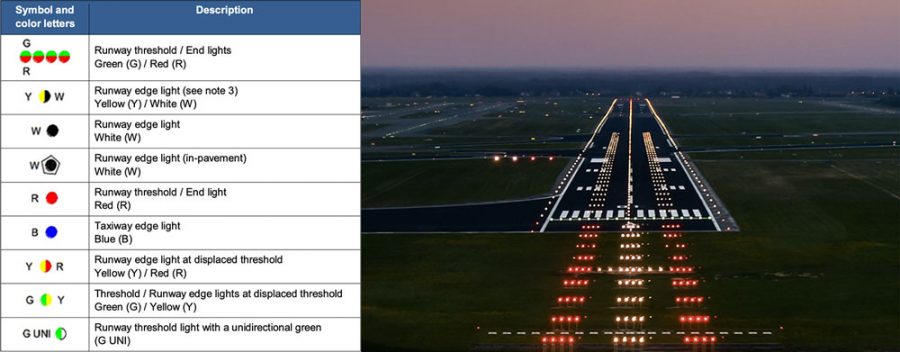
More from AirportNerd
The Complete Guide to Airplane Window Shade Etiquette
Picture this. You are sitting in the most undesired seat on the airplane, the middle…
Why Do Airlines and Airports Use 24-Hour Time?
The culprit of many missed flight connections: distinguishing between 12-hour and 24-hour clocks. While most…
Why Are Airports Named After U.S. presidents?
Donald Trump has been in the news for wanting to rename Palm Beach International Airport…
Why Do Laptops Get Special Attention at Airport Security?
?Shoes off, laptops out, liquids in zip lock bags, all in separate trays!? Frequent flyers…

